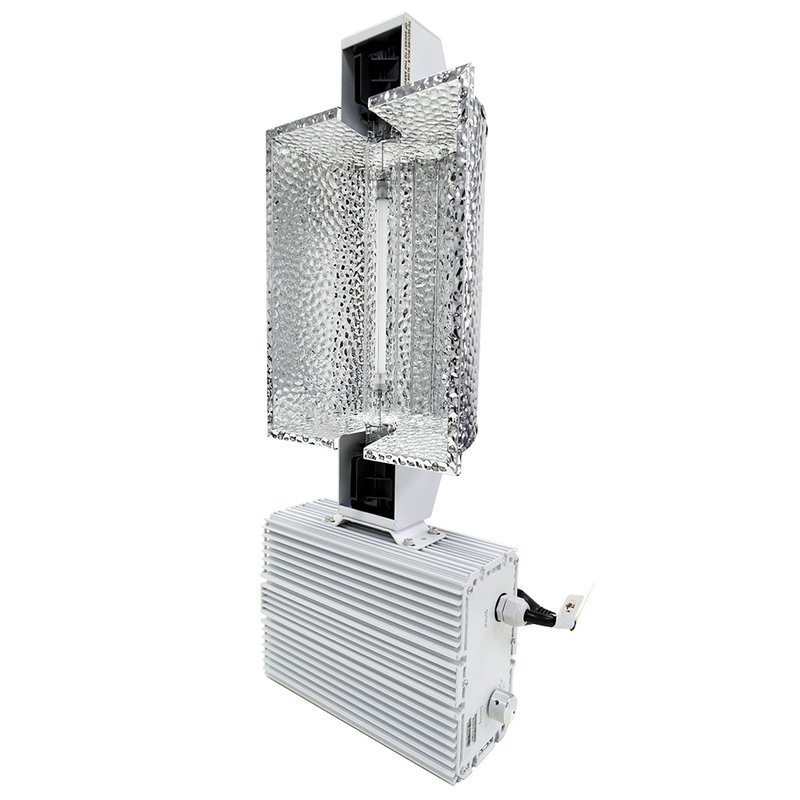Common plant growth lights are: fluorescent lights, LED lights, HID lights.
Grow Light Type 1 - Fluorescent
Fluorescent lamps are what we often call fluorescent lamps. Fluorescent lamps use the principle of low-pressure mercury vapor to emit ultraviolet rays after being energized, so that the fluorescent powder emits visible light. Fluorescent lamps come in many form factors, including long, thin bulbs as well as smaller CFLs. The luminous efficiency ranges from 30lm/W to 90lm/W. It is a common plant growth light.
LED lights are composed of light-emitting diodes, and in a housing with a radiator or built-in fan, LED lights usually do not require a separate ballast, and can be directly plugged into a standard power outlet for direct use.
LED grow lights vary according to usage. Green, red, far-red, and blue light spectra are known from studies of photomorphogenesis to have effects on root formation, plant growth, and flowering, but there is not enough scientific research or field testing to recommend specific color ratios from trials using LED grow lights. Many plants will grow normally if given red and blue light. However, many studies have shown that red and blue light only provide very cost-effective growth methods, and plants still grow better with light supplementing green.
White LED grow lights offer a full spectrum and are designed to mimic natural light, giving plants a balanced spectrum of red, blue and green. The spectrum used varies, but white LED grow lights are designed to emit a similar amount of red and blue light, with the added green light appearing as white. White LED lights are often used for supplemental lighting in home and office spaces.
A large number of plant species have been evaluated in greenhouse trials to ensure that plants are of higher quality in biomass and biochemical composition and are even comparable to field conditions. Plant performance was measured for mint, basil, lentils, lettuce, cabbage, parsley, carrots by assessing plant health and vigor and success in promoting growth. Promotes profuse blooming in select ornamental plants.
LED grow lights should keep plants at least 12 inches (30 cm) away from plants to prevent leaf burn.

Description:
1000w DE Light System Enclosed
.Available voltage:120/240v,240/277v,347v,480v
- Enclosed style with more light gathering for plant
- Ultra high frequency ballast with highefficiency
- Dimmable output:600w/750w/1000w/1150w
- Various style hoods easy for replacement
- Available in premium 95% reflectivity European
(VEGA) aluminum, or Chinese aluminum
- Available in 0-10v controllable ballast
- 8ft power cordincluded
- Patented DEsocket
Grow Lights Type 3—HID Lights
HID lights are also called high-intensity discharge lights, and while fluorescent lights were a common type of indoor grow light in the past, HID lights are now very popular. High intensity discharge lamps have high lumen/w te efficiency. There are several different types of HID lamps, including mercury vapor, metal halide, high pressure sodium, and conversion bulbs. Metal halide and HPS lamps produce some color spectrum somewhat similar to the sun and can be used to grow plants. Mercury vapor lamps are the first type of HIDs and are widely used for street lighting, but when it comes to indoor gardening, they produce a relatively poor spectrum for plant growth, so they are mostly replaced by other types of HIDs for growing plants.
While all HID lamps use the same principles, different types of bulbs have different starting and voltage requirements, as well as different operating characteristics and physical shapes. Because such a bulb won't work unless a matching ballast is used, even if the bulb is installed. In addition to producing a lower level of light, mismatched bulbs and ballasts can stop working, or even burn out immediately.
